Albania
When we traveled to Albania, we knew nothing about the country on the Mediterranean. We only knew what it wasn’t. Albania had never been part of Yugoslavia, but had been ruled by the communist dictator Enver Hoxha. Albania is not an EU country, although it is surrounded by other EU countries. Albania is not a religious state. Albania is not Italy, Serbia, Turkey or Greece, although these countries once influenced or dominated the entire region. Apart from Mother Teresa, we did not know of any famous person that Albania had generated in sports, art, music or literature.
We had no ideas or expectations of the country. It didn’t take a day for it to win us over.
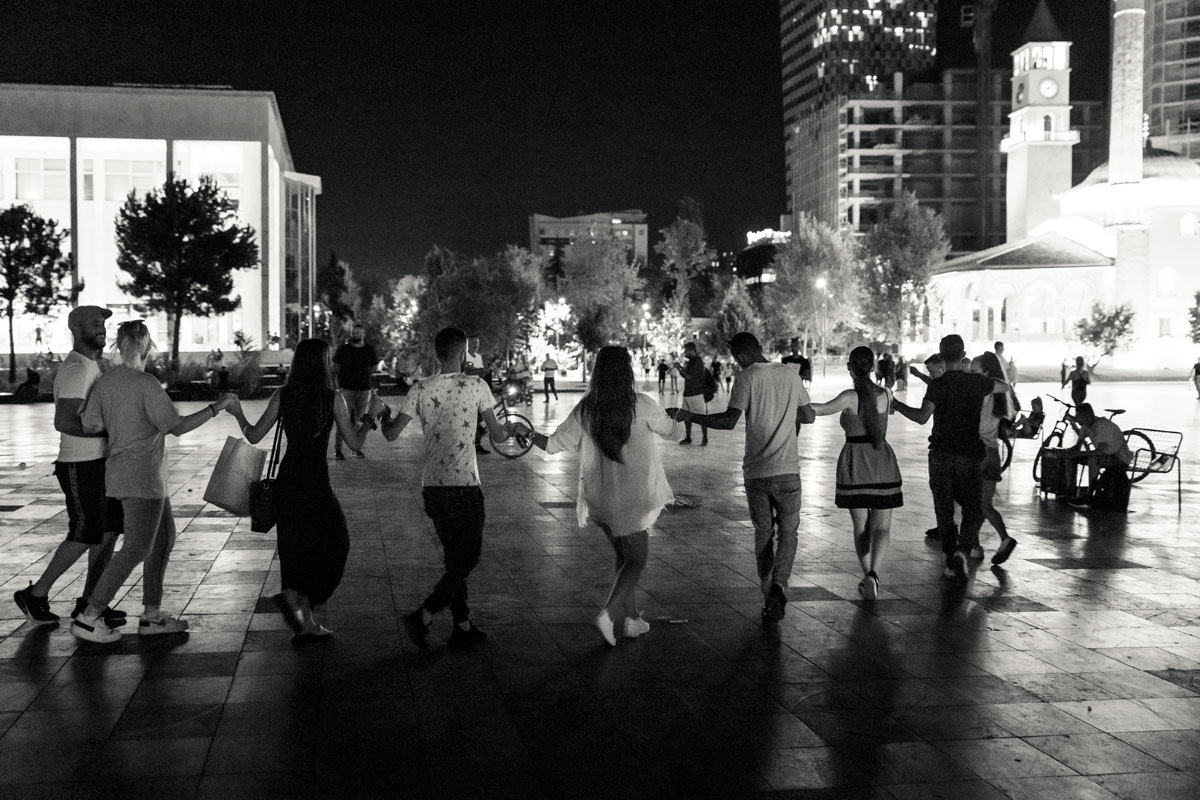
We drive along an empty highway through the border mountains from Kosovo to Tirana. Off the highway, we see withered fields or farms hidden behind fences. The land becomes flatter, the traffic heavier – we are approaching the capital. Endless construction sites, the roads torn up, mountains of sand and huge machines. Blue signs remind us that the EU is paying for and promoting the projects. Tirana’s metamorphosis from a gray communist bunker to an artful, brightly colored city is far from complete.
Skanderberg Square is bursting with national self-confidence. The opera house, the national library, the national museum. The town hall, an eminent mosque, a cathedral, a war bunker full of art and newly built skyscrapers. Not far away is the Albanian parliament. And then, at the edge of the large, wide square: the statue of the national hero Skanderberg on horseback.
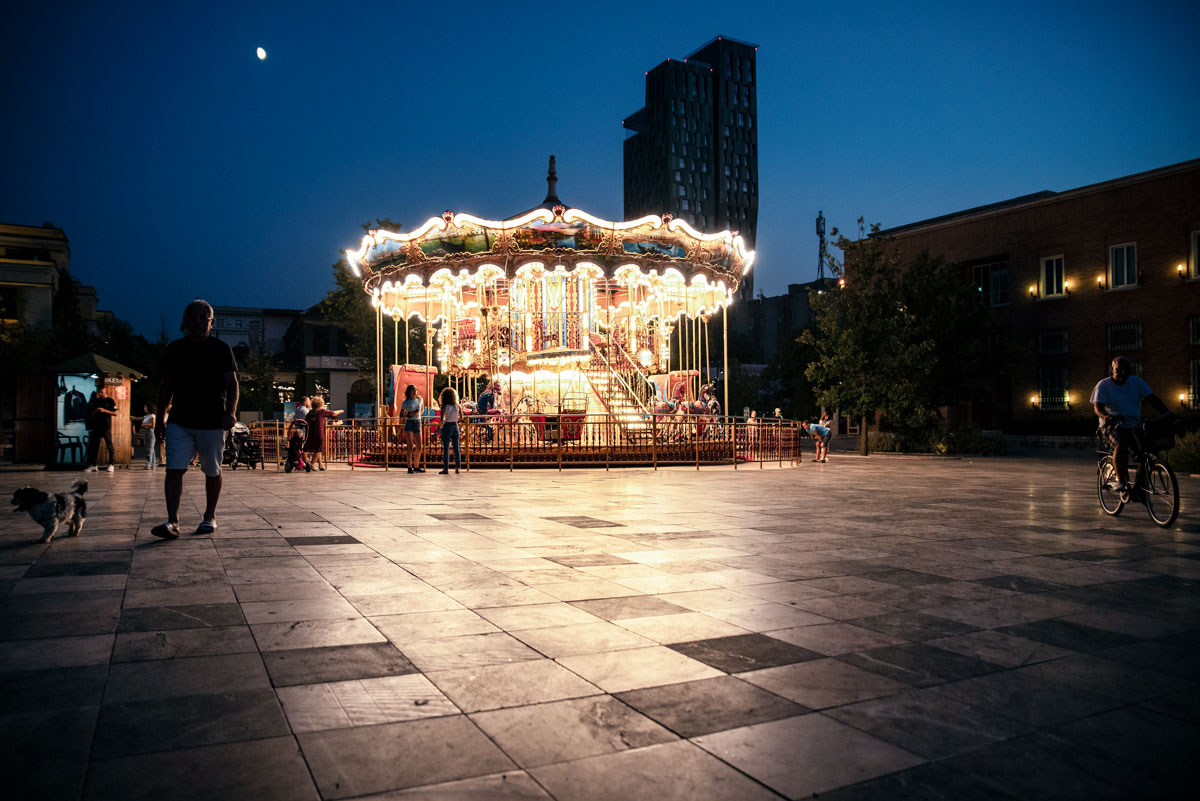
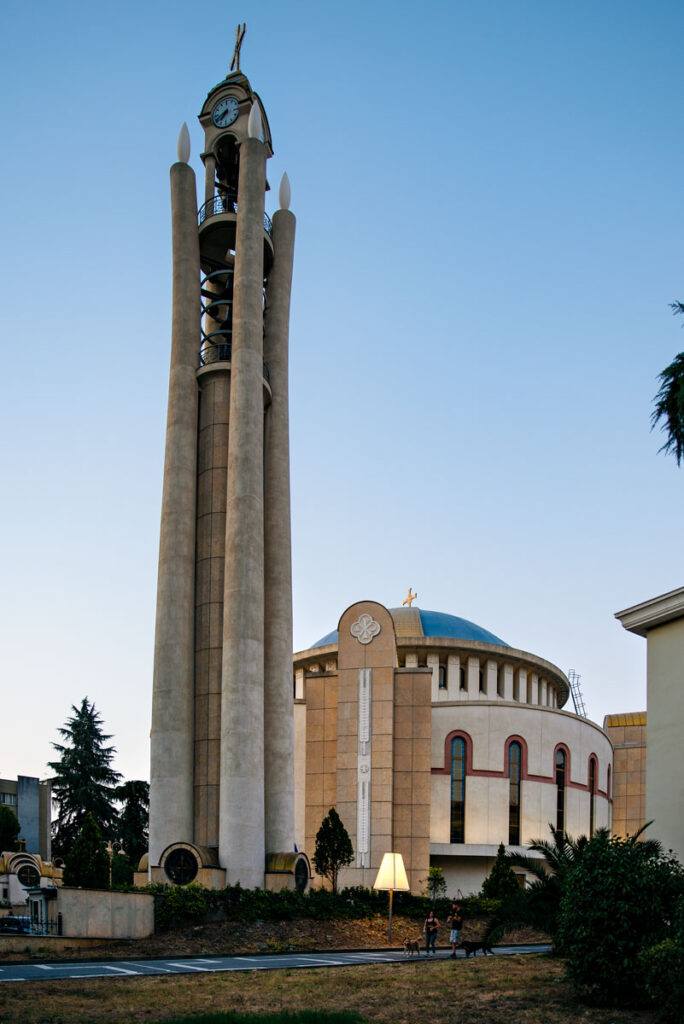
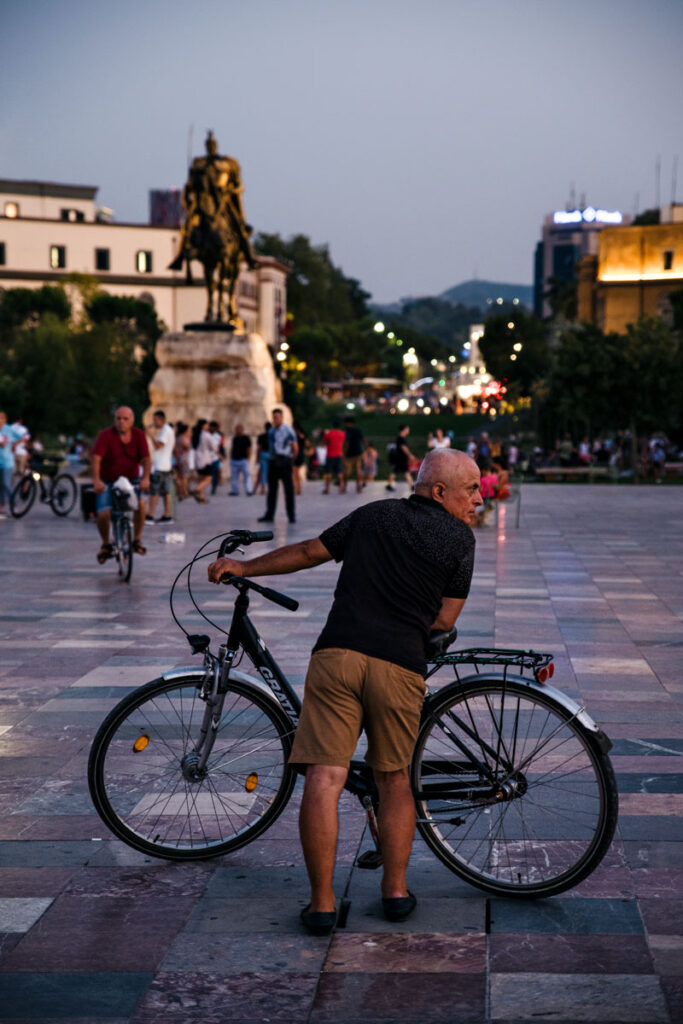
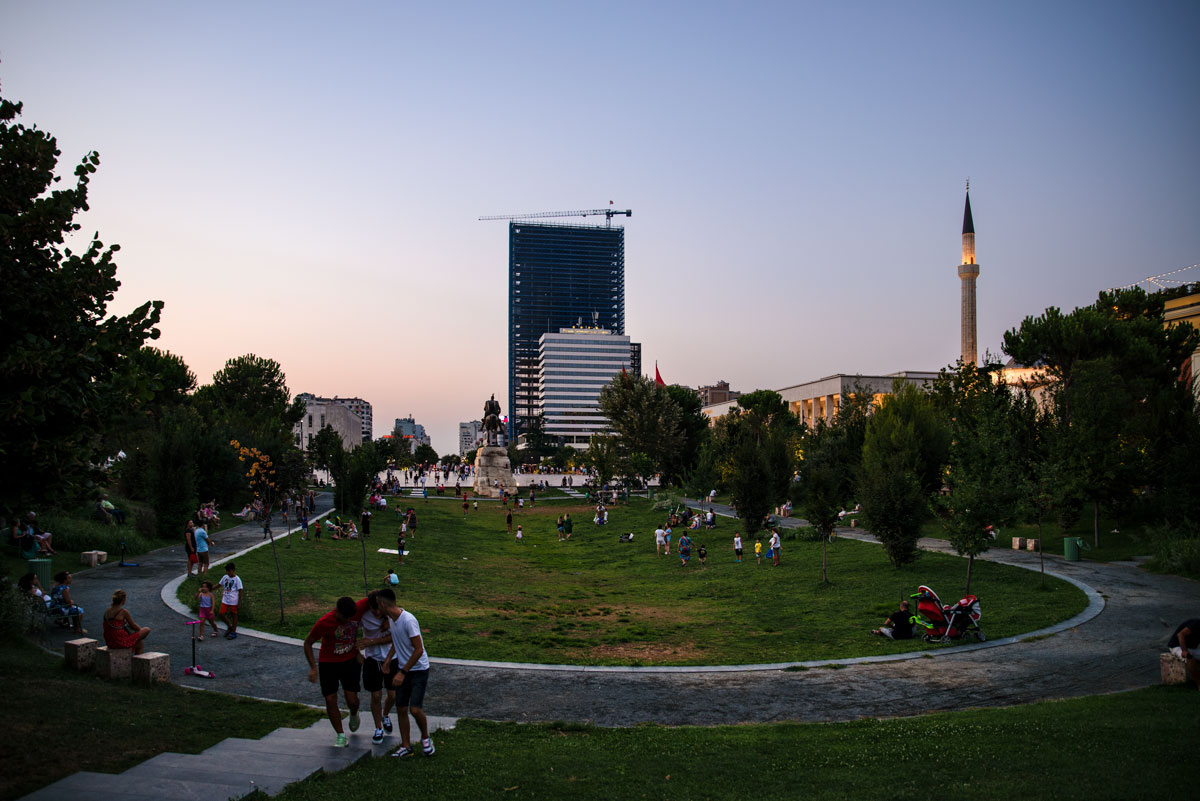
Albania’s landscape in midsummer is mostly barren and yellow. The ground is stony and there is always a mountain on the horizon. Now and again, grotesque fairytale castles stand directly on the main roads. These are event locations that can be hired for weddings. A reminiscence of Central European architecture and clichés.
A family-run winery, a Tuscan idyll. Almost ripe fruit hangs from the vines. We eat olives and fresh sheep’s cheese while tasting the heavy, red wine that they produce in the country. It is Albania’s soul – it has a past and certainly a future. It tastes different, cannot be categorized, has different nuances and shades. A rich, interesting wine. A deep soul that can hardly be described.
Chris' Tip
If you really want to try completely different wines, then we recommend the Çobo Winery near Berat. All the wines we tried had something special and tasted excellent. Basically, the wines are reminiscent of Italian wines. You should definitely try the Albanian grape variety Shesh i Zi.
The wine tasting is definitely worth it, you get a short tour of the winery and can then try different wines and a raki. Small snacks are also served. A real experience!
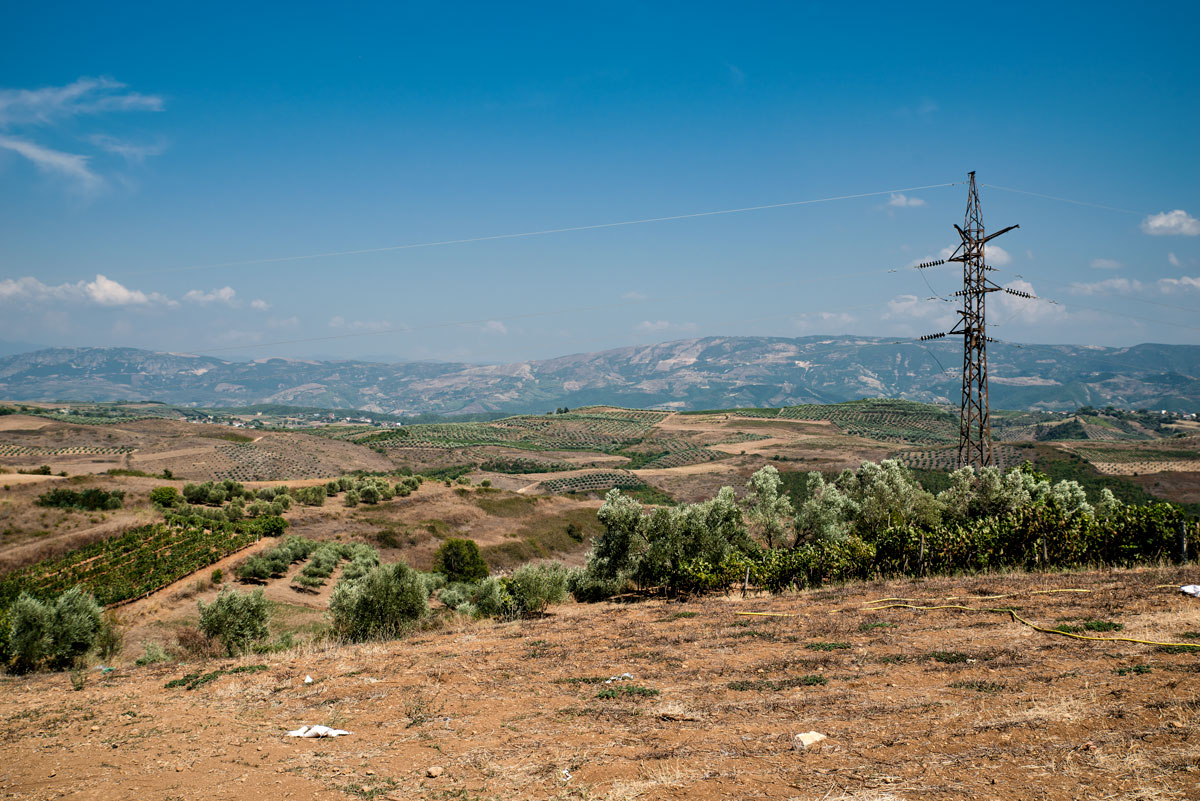
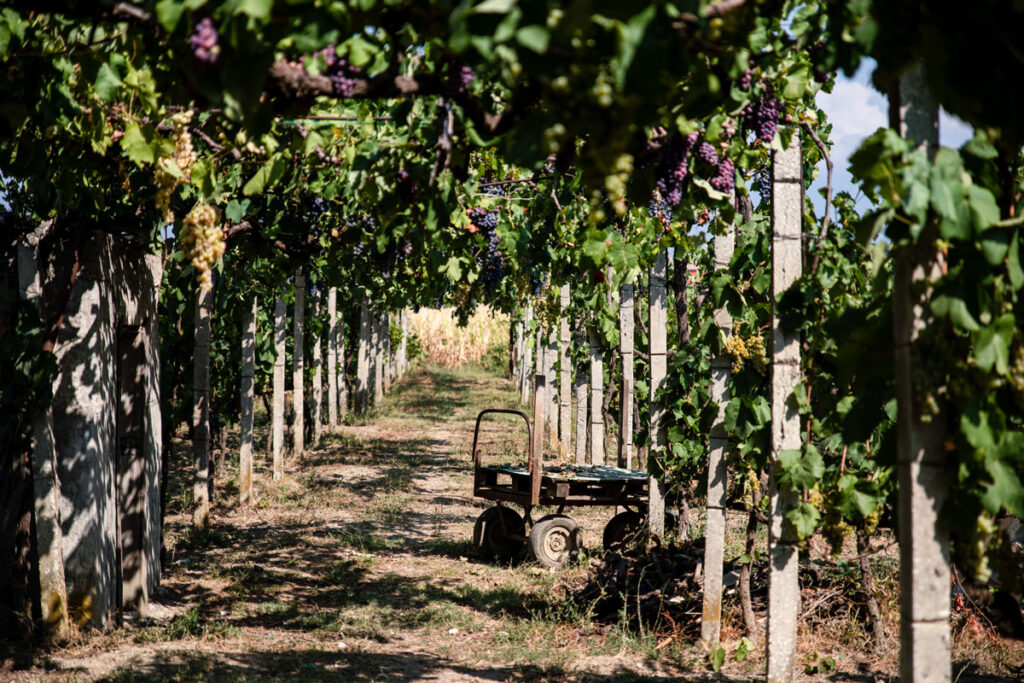
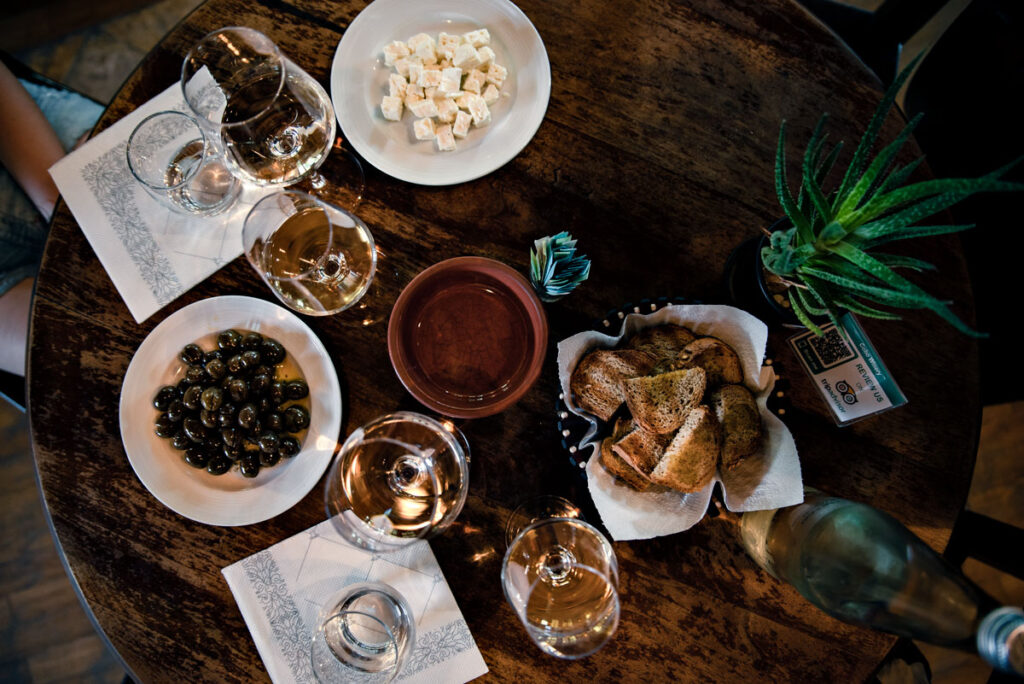
Berat – the city of a thousand windows. Cross the bridge once and it becomes clear where the town’s nickname comes from. A mountain slope with house after house built on its side, some of which can only be reached via narrow alleyways. A small market by the river – a handful of men offer a small amount of fruit. In the park next door, men play checkers. Apart from a few teenagers, we mainly see men. The wives are probably preparing dinner at home. Albania – that is also traditional family life.
We find a cozy spot for a coffee in the pedestrian zone. Teenagers stroll past us in groups – groups of girls, groups of boys. Sometimes couples touching hands inconspicuously, giggling, looking sheepishly to the side. After a while, they pass us again, this time coming from the left. The pedestrian zone is not particularly long and there doesn’t seem to be much to do in Berat unless you are a tourist admiring the thousands of windows. The young people walk from the beginning to the end of the pedestrian zone, then turn back. Back and forth until they have told each other everything or dinner calls.
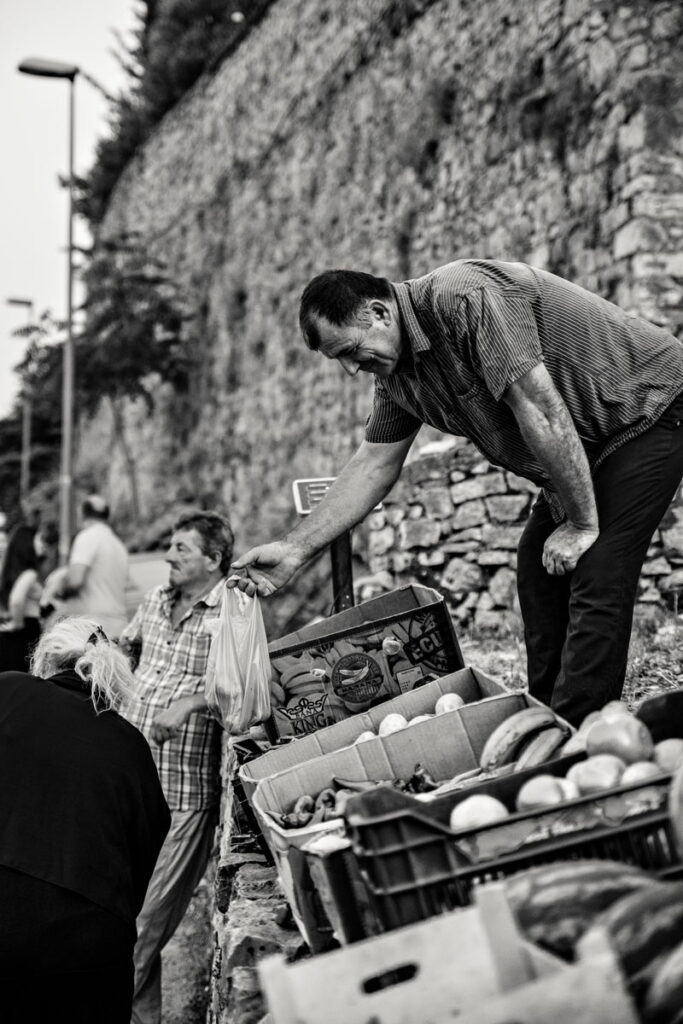

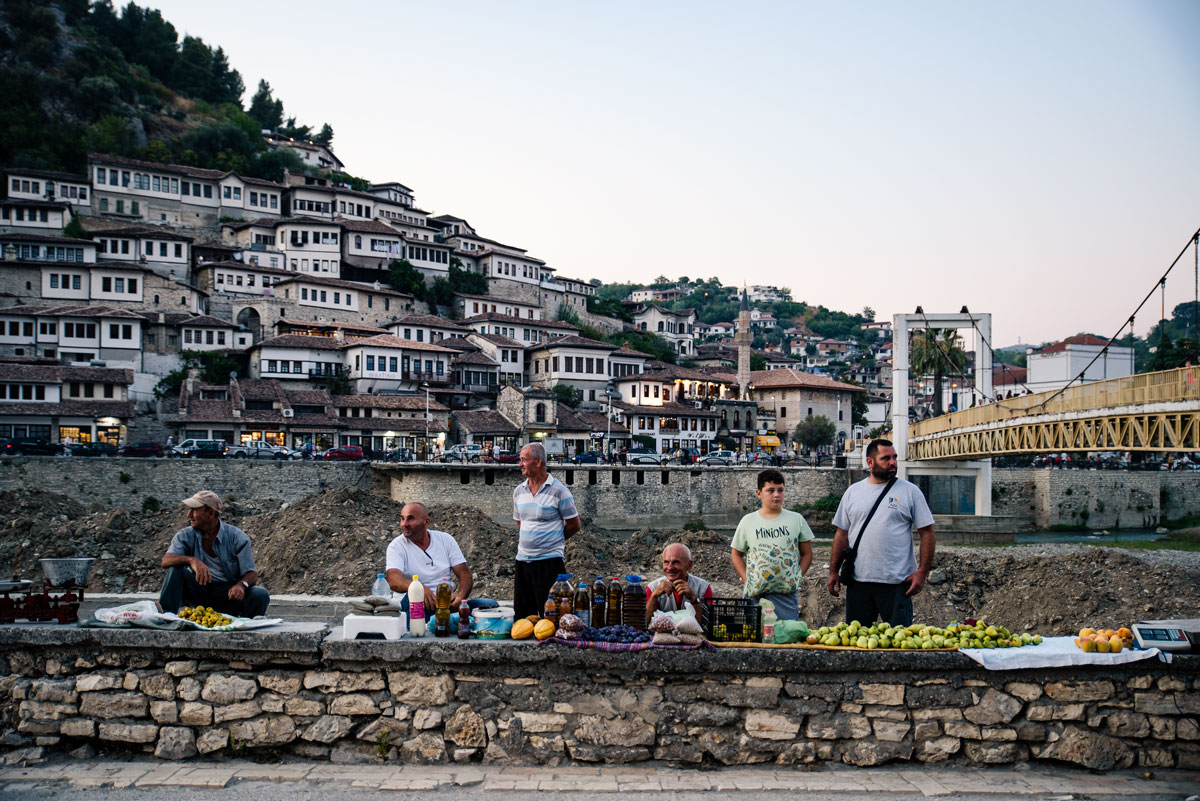
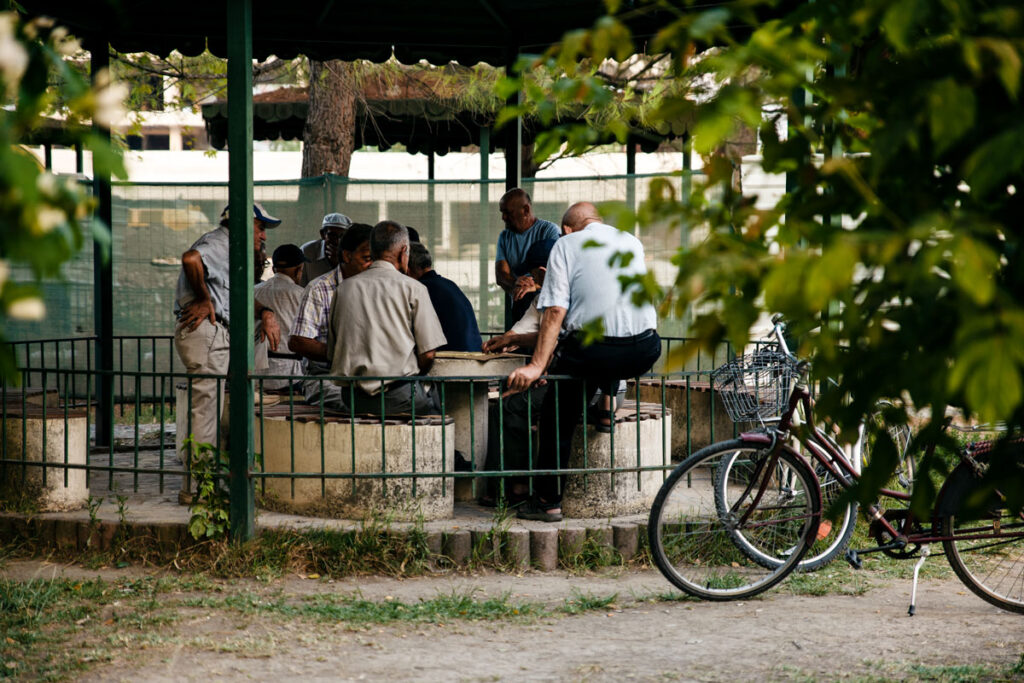
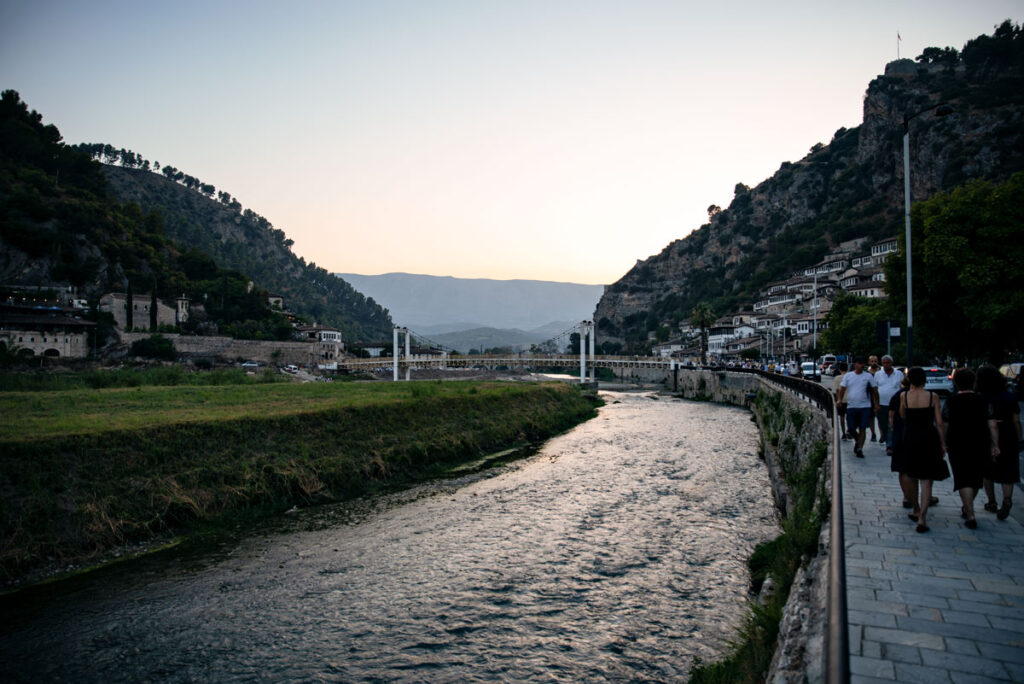
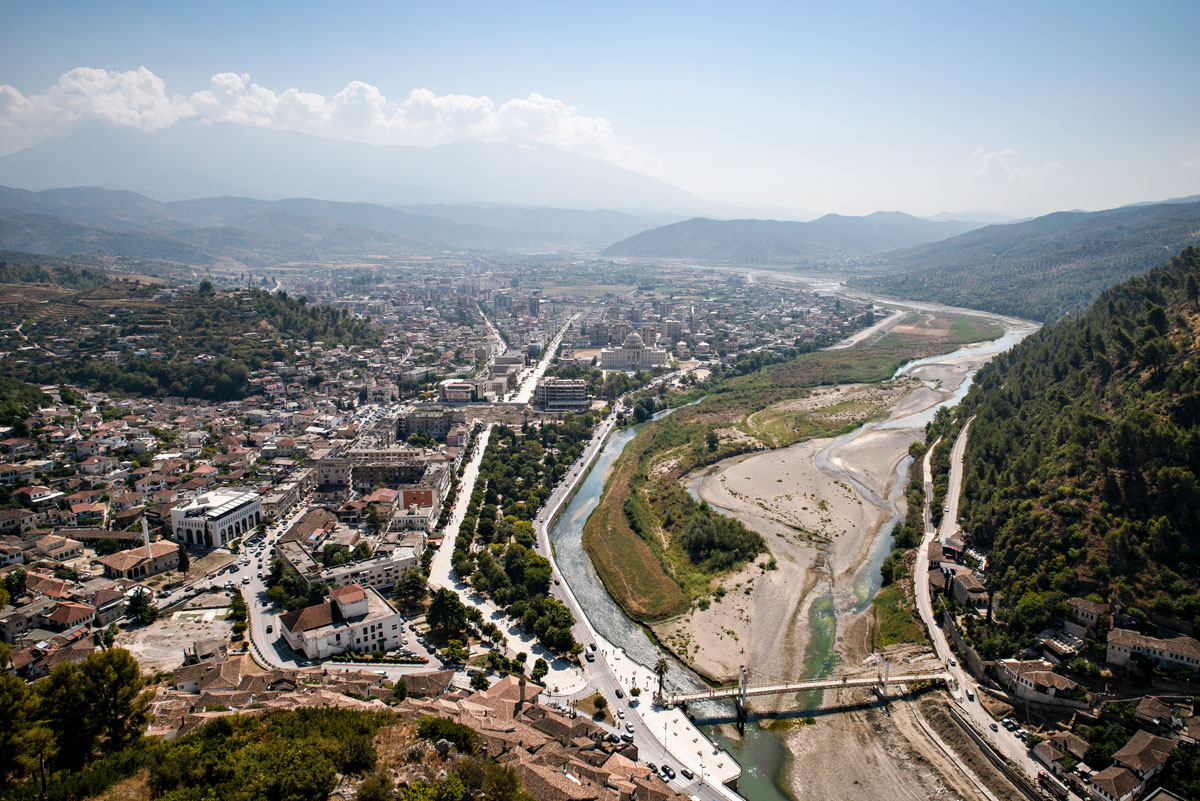
The Blue Eye promises lonely cooling. An oasis in the middle of the barren landscape. Indeed: green bushes and trees surround the bubbling spring to which a dusty track leads. As we pass a checkpoint and are asked to pay the entrance fee, we suspect that it might not be as lonely as we had hoped. The water is crystal clear, sapphire blue. What pictures don’t show: Hordes of people looking to cool off cavorting in and around the water.
So we drive on and arrive at a lake in the late afternoon. The last day visitors are just leaving, leaving us and a hungry dog behind. The next morning, we realize that we have spent the night just a stone’s throw away from the historic Butrint Park. We cross the lake on a tiny, outdated car ferry and we’re there. A small amphitheater, busts of Roman rulers, crumbling colonnades. The branches of pine trees stretch a roof all over it.
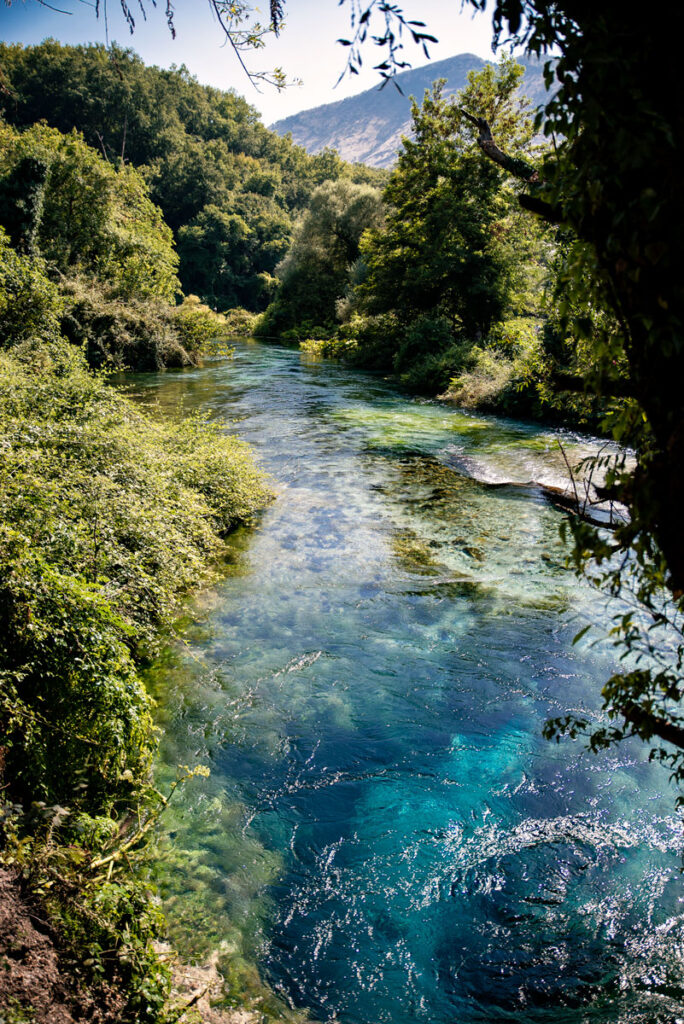
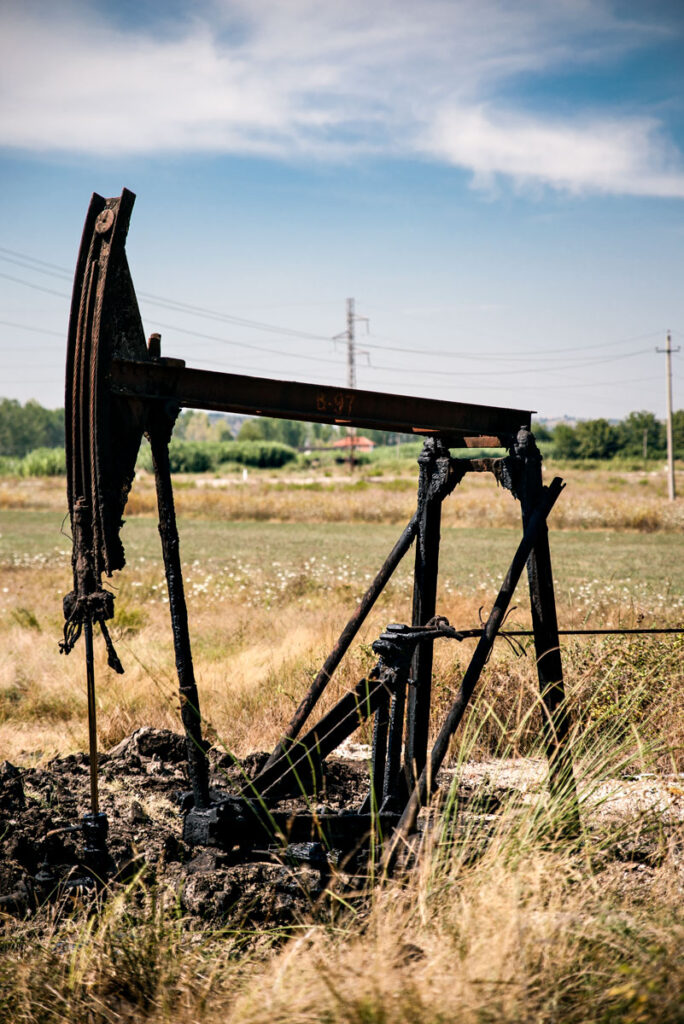
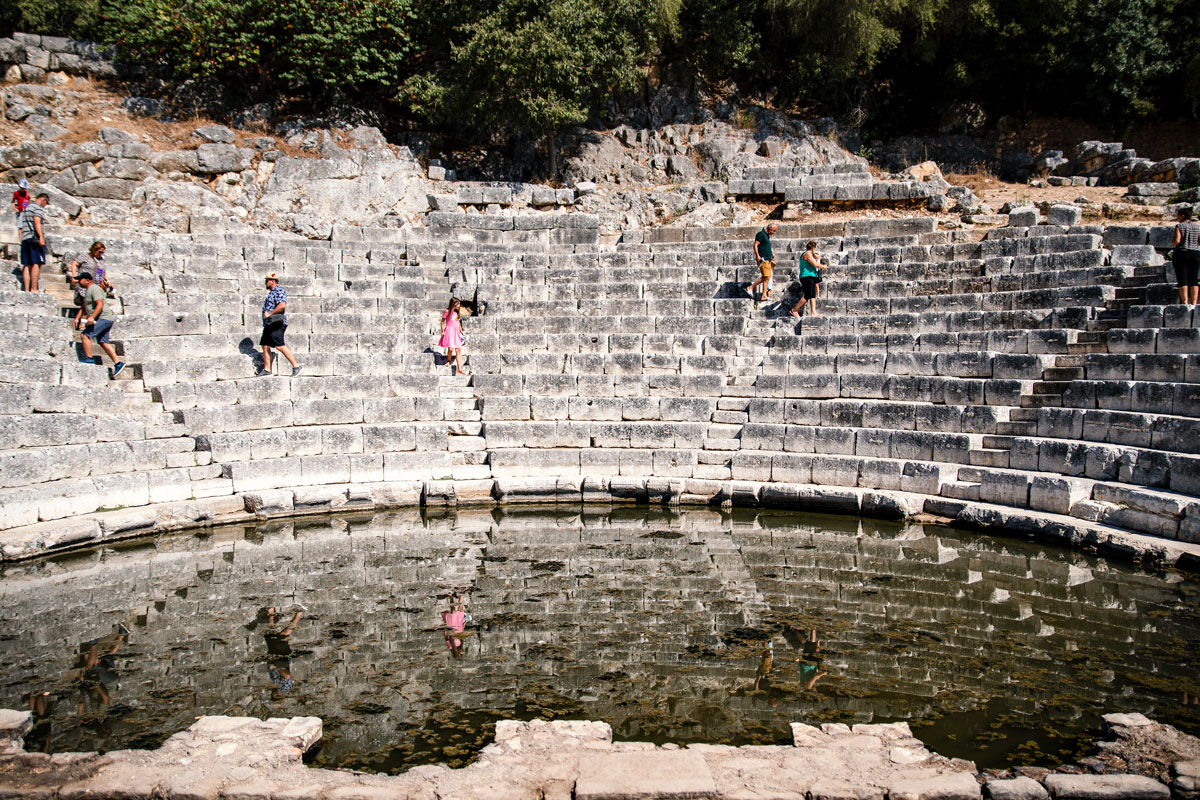
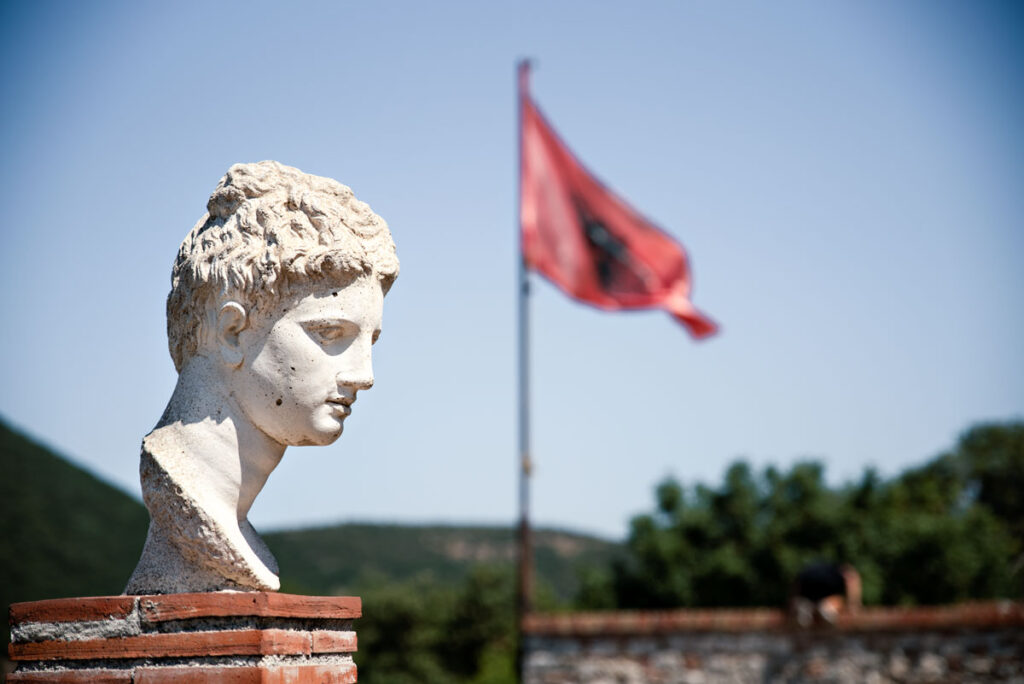
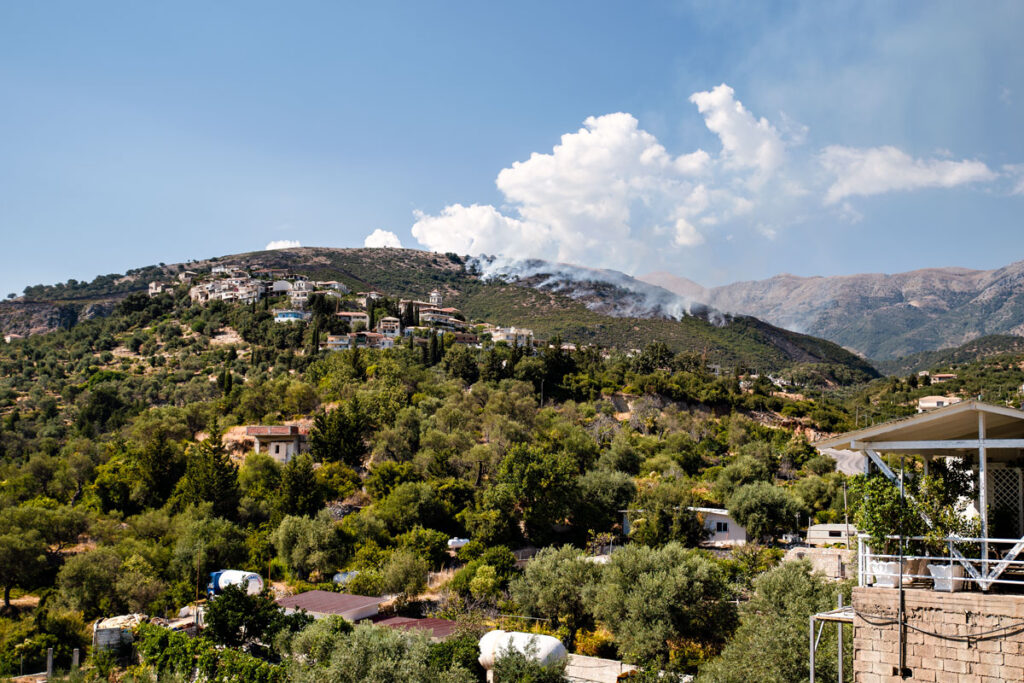
Europe is on fire this summer. Italy, Greece and Spain are in the news. But it is also burning in Albania. Again and again we see how fire consumes the barren trees.
We drive north along the coast. There are vacation resorts full of Italian tourists. They come by ferry and crowd the beaches. Cheap beer, sun, fried fish and chips. Children drenched in suntan lotion. Swimming tires, melting ice cream, beach promenades and as many cars as people. But we also find stony tracks leading off the main roads. Every now and then we see foreigners in their converted vans. After Corona, they are everywhere. We find a quiet spot on a steep cliff. There is a small restaurant down by the water and a nice beach. Less than a hundred kilometers away, on the other side of the sea, lies the Italian province of Puglia. There, the sun sinks as a glowing red ball. It is our last night in Albania. It will give us a sky full of stars.
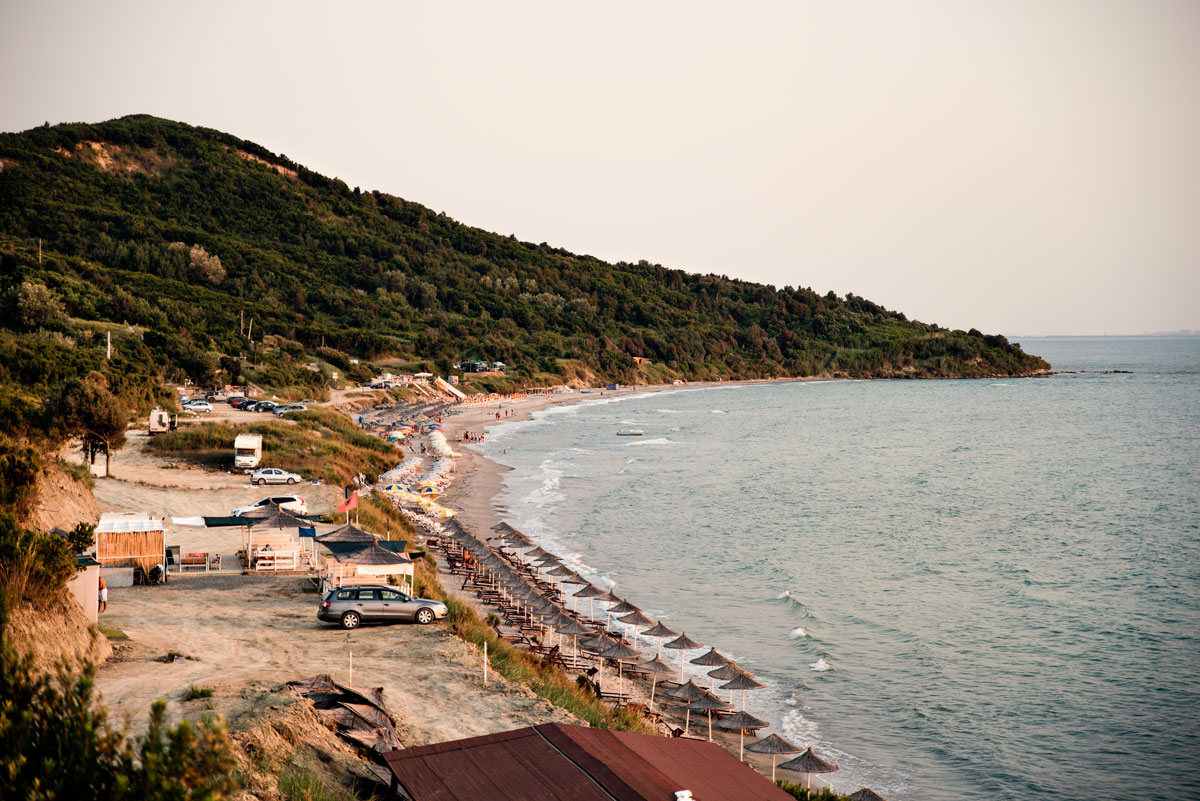
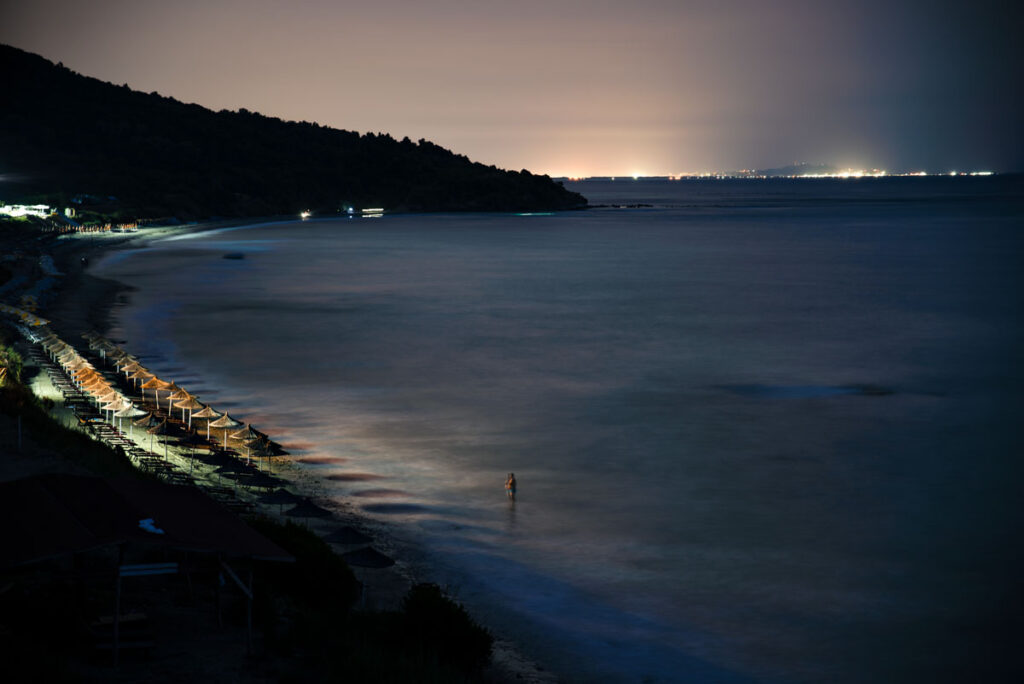
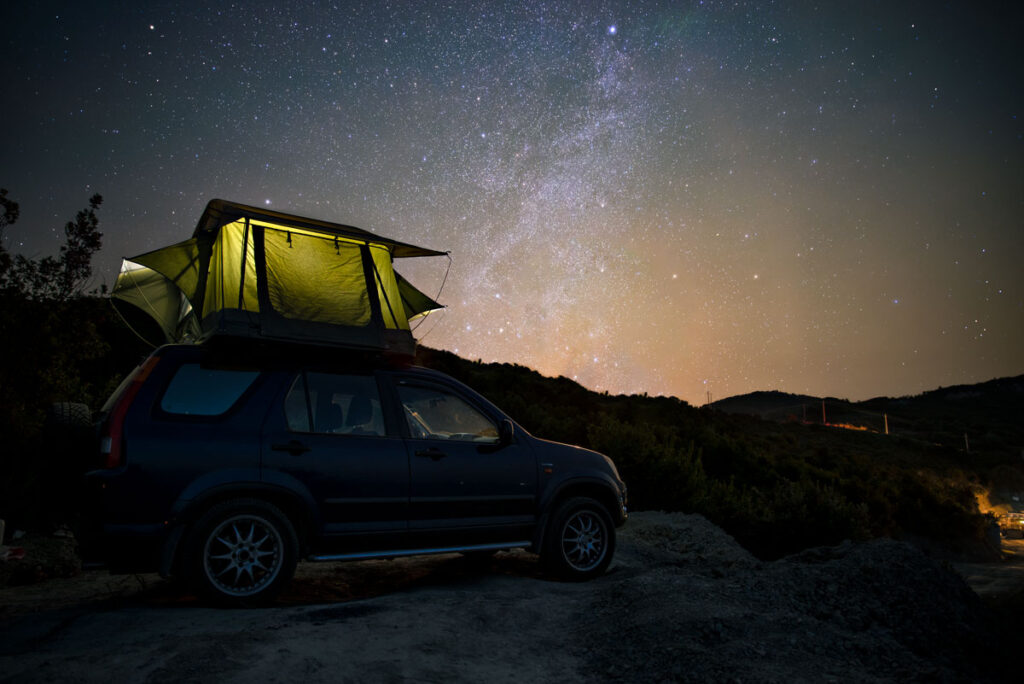
In the morning, we are invited to an Albanian breakfast: a strong mocha and a raki. The ultimate pick-me-up on an empty stomach. On the way home, we have lunch in Durrës. Here, too, a large amphitheater bears witness to the former presence of the Romans. So much culture, so much history in this country.
Albania has given us a lot. Its people, its traditions, its laughter and its food. Its landscape, which seems so barren, and its warmth, which is all the more loving for it. It hurts to leave this country.
Info about our trip
We were absolutely thrilled with Albania. The people are incredibly open-hearted and hospitable, and there is so much to discover in terms of nature and history. Albania offers great cities and beaches. It is easy to travel around in your own car and the price level is relatively low – however, more and more individual and package tourists are discovering the country for themselves. So it is no longer an insider tip. What we didn’t like at all, however, were the tourist resorts by the sea. Towns like Vlora or Ksamil are overcrowded and not really nice. There are more suitable countries for a pure beach vacation.
Albania is unbeatably cheap compared to other European countries. Of course, you will pay a little more by the sea and especially in the tourist resorts.
You should try the Albanian breakfast, consisting of strong mocha and raki. If that doesn’t fill you up, try Albanian bread or fritters.
You will find olives and different types of cheese everywhere, lots of olive oil, wine and beer (often Italian products too). The cuisine is definitely Mediterranean with oriental influences. Spices are used extensively, as are many types of vegetables. But meat plays the biggest role, mainly lamb, sheep and beef. You will definitely find something you like. And if you prefer the classic way: Italy is just around the corner, so you’ll find excellent Italian cuisine in every city.
We were traveling in Albania with our roof tent. We only stayed in hotels in Tirana and Berat.
In Tirana, we stayed at the Artistic Tirana Guesthouse, which was very clean and had artfully furnished rooms. You can also sleep here for very little money. In Berat, we stayed at the Hotel Omer – also very nice rooms, centrally located and a very nice hostess.
Kosovo Albanians, stabbings, honor killings, Kanun, gang crime. These are the terms that many people have in mind when they think of Albania. The truth is: Albania is an extremely safe country to travel to. A lot has happened in terms of safety and transparency since it became an EU candidate country. You can therefore travel through Albania without any worries and even camp outdoors (of course, you should still heed the usual safety advice).
We have not yet been to Albania with children. As family is very important in this country, we estimate that children are treated in an extremely friendly and loving manner. In any case, Albania has so much variety to offer that children will certainly get their fun.
In our opinion, there is only one adequate means of transportation for exploring Albania: your own car. The journey from Germany can be made entertaining with stops along the Mediterranean. In any case, Albania has been attracting the European off-road scene for several years now, as there are still many challenging and legal tracks here. Note that the road network is not well developed everywhere. Even if the road surface is perfect, there are many mountains with narrow passes or hairpin bends that take time and require concentrated driving.
Off-road driving: Unfortunately, we couldn’t really go off-road with our Honda CR-V, but Albania is the off-road paradise par excellence. There are numerous road books that show you the most beautiful routes (recommendations in the “Worth reading” tab). But beware: off-road driving in Mediterranean environments is rarely good for the paintwork. Thorny bushes scratch the vehicle and leave lasting memories. You should be aware of this!
- You can find a good overview of Albania’s history in Franziska Tschinderle’s Albanien: Aus der Isolation in eine europäische Zukunft
- Marie-Janine Calic takes a broader look in Geschichte des Balkans: Von den Anfängen bis zur Gegenwart
- For off-road drivers, we recommend the GPS-Offroad-Tourenbuch Albanien, in which you will find 29 routes for self-drivers with different levels of difficulty
